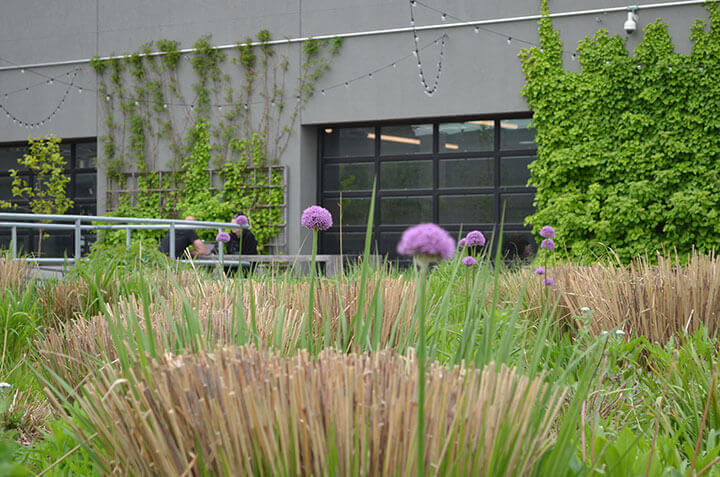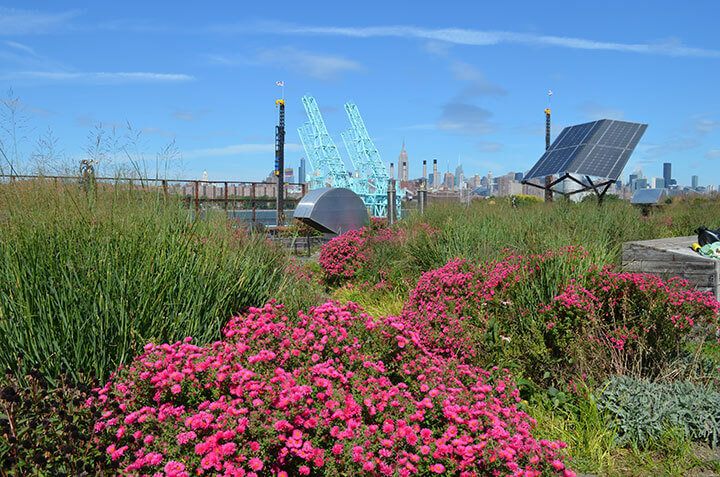
Japanese Garden Tools Vs. American: What’s the Difference?
You may have seen Japanese gardening tools popping up more in stores and online. Sure, they&rs… Read More

All too often New York City landscapers receive the call for annual “pops of color”. We live in a world where a client’s palette is often limited to tulips, pansies, geraniums, and mums. Although I can make an argument for some (not all…) annuals*, I hold a strong belief that, with the exception of agriculturally productive spaces**, annuals should be limited in our urban landscape. A case for perennials:

(Photo: Vice, Spring 2016)
As you walk around the Upper East Side in New York City, you’ll note a landscape consisting of evergreen specimens surrounded by bulbs (March through May), begonias (June through August), cabbages and mums (September through November), and some variation of pine or juniper branches (December through February). This somewhat outdated annual landscape makes for a seasonal display that landlords, building supers, and tenants are hungry for. Though this Upper East Side aesthetic can be appreciated, a perennial landscape can achieve the same diverse showcase of blooms in a more naturalistic way, while also providing an important resource to pollinators, birds, and other wildlife.

(Photo: Vice, Early Spring 2016)
The all season perennial garden has been made hugely popular by the likes of Piet Oudolf, Andi Pettis, and Rebecca McMackin. These leaders in sustainable landscaping are proponents of perennial, and at times native, gardens that utilize diverse plant communities. They have worked to bring a more naturalistic approach to the forefront of urban and rural landscapes alike. In New York City, you can see stunning perennial displays on a tour of Brooklyn Bridge Park with your kids, as you bike through the Battery Park Conservancy, and on the rooftops of private residences striving to achieve an aesthetic befitting the Highline. All of these spaces, devoid of annuals, are earning their keep not simply because of their high profile advocates, but also because they are a more sustainable and ecological option than seasonal annual plantings.

(Photo: Vice, Fall 2016)
In addition to reducing the costs associated with replanting seasonal schemes, perennial landscapes can also provide a number of other benefits. Leaving a plant in place from season to season, allows it to put down strong roots. Over time, these established roots will reduce the water demands of the vegetation. A strong root stock will also prevent aggressive weeds from establishing as quickly as they might otherwise, reducing ongoing maintenance.*** When looking at a native perennial landscape in particular, established plants thrive in the fairly lean soils that they are accustomed to in nature. This ability to thrive and grow in poorer soil conditions will minimize the reliance on fertilizer and ongoing amendments. A healthy perennial landscape will in fact enrich itself come the Fall and Winter. If you avoid the impulse to rake, fallen leaves and other detritus will decompose and provide your garden with its own nutrient rich mulch. Once plants go through this cycle of dropping foliage to prepare for dormancy, their remaining foliage and structures provide valuable nesting and forage material for wildlife. While you rest after a long growing season, your winter garden may be providing shelter for female solitary bees constructing nests in hollow grass tubes, burrowing creatures that may make use of lower foliage as a nesting ground, or birds overwintering and preparing nest beds.

(Photo: Vice, Winter 2017)
Ensuring that your perennial garden is used to enrich the local ecology means that cut backs in your garden should be postponed until the Spring. Typically, as Fall approaches, we put on our muck boots and prepare to clean house, but with opinions shifting on leaving the cast-off growth in place to benefit our local wildlife, cut back season has been rescheduled to the early Spring. Your winter can be spent enjoying the display of frost covered seed pods and textural grasses, a sculptural addition to your garden to last until the March frenzy hits.
*As told from the point of view of Brooklyn, NY, Zone 6
**For edible and agricultural landscapes, most fruiting crops (tomatoes, cucumbers, zucchinis, eggplants) will fall into the annual category.
***This is not to say weeding is not necessary in a native perennial space.